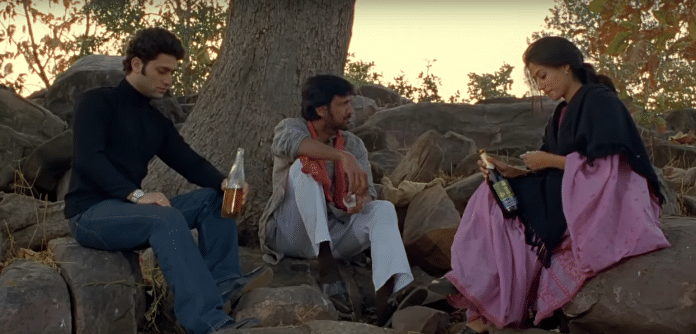The way the ‘dark era’ of the Emergency hit the common man, it provided ample material for thought-provoking political subjects, but they were few takers.
New Delhi: Political cinema is not easy to make, no matter which part of the world you are in. In India, though, expect to see the full might of the state the moment you touch any subject people are uncomfortable with – religion and politics, primarily. There are just too many holy cows.
In 1975, 43 years to the day, then prime minister Indira Gandhi declared a national emergency due to “internal disturbances”. Over 21 months through 1977, human rights violations were reported across the country, including an infamous mass sterilisation campaign headed by Sanjay Gandhi.
The way the ‘dark era’ of the Emergency hit the common man, it provided ample material for thought-provoking political subjects, but they were few takers. If it were Hollywood, films on emergency would’ve been made on an annual basis. Not in Mumbai, though.
Director Sanjay Leela Bhansali found out earlier this year that touching the politics of even a several-centuries-old kingdom can bring strange absurdities to the national attention, including sword wielding men threatening violence on TV screens. What hope is there, then, for filmmakers who actually want to tackle contemporary issues, from a more realistic prism. The fear of the government looms constantly.
In the years since Emergency, for large stretches, the Congress party has been at the Centre. With its control over the information and broadcasting ministry, it has largely escaped culpability by making sure that there isn’t enough public discourse, through popular culture, on the Emergency days. Few filmmakers took the chance to offend the national leadership. And as a result, in four decades there’ve been barely four noteworthy films made on the darkest chapter in Indian republic’s history.
Nasbandi (1978): Possibly the most notorious in this list, the I.S. Johar directed film was a satirical take on Sanjay Gandhi’s forced mass sterilisation programme. Banned after its release, it gained popularity through television and home video.
Kissa Kursi Ka (1978): Most famous for incidents around the film rather than in it, this Amrit Nahata directorial featuring Shabana Azmi was a satire focusing on the politics of Indira and Sanjay Gandhi. Despite nothing noteworthy about the film, its prints were seized after a long battle with the censor board, under the I&B ministry, and were burnt later by the political establishment of the time.
Hazaaron Khwaishein Aisi (2005): Perhaps because he made it three decades after the period it was set in, Sudhir Mishra achieved a most unique thing for a Hindi political film – perspective. Featuring characters representing all political hues of the time, this well performed film was able to demonstrate the deep scars left by the inherent cynical politics it talked about. Mishra didn’t just figure out the ‘what’ of his subject, but the ‘how’ as well. Dramatised beautifully with memorable moments all over, it also boasted one of the best soundtracks in the past couple of decades. It’s a tragedy the film wasn’t seen by many people, but it showed that Mumbai too can offer critique when it chooses to.
Indu Sarkar (2017): Made in the most amiable circumstances ever afforded to any filmmaker for this subject, the Madhur Bhandarkar film probably deserved more audience. Loaded with unsubtle symbolism, it lacked any nuance but made up for it through spunk. With a couple of good performances, Bhandarkar managed to get, in his own way, the times right. It was, but natural then that the Congress would rise to claim its share of infamy by protesting against a very mild, if provocative, film.
There have been documentaries too on the emergency days and the lead up to it, including Waves of Revolution (1975) and Prisoners of Conscience (1978) by well-known filmmaker Anand Patwardhan. Films in regional languages such as Piravi (1989) by Shaji N. Karun and Balu Mahendru’s Yathra (1985) — both in Malayalam — also dealt with the issue, without much controversy.
Mainstream Hindi films, however, continue to shy away from finding Emergency stories that resonate and provoke. If heist thrillers like Baadshaho (2017) is all it will throw at the audience, then there’s a lot left to be said and done.



